Moths, memories and surviving the Russian Revolution: that knackered old rug is worth saving
Don’t consign that faded and tatty rug you inherited to the skip, warns Catriona Gray. A specialist repairer can work miracles on even the most unloved pieces
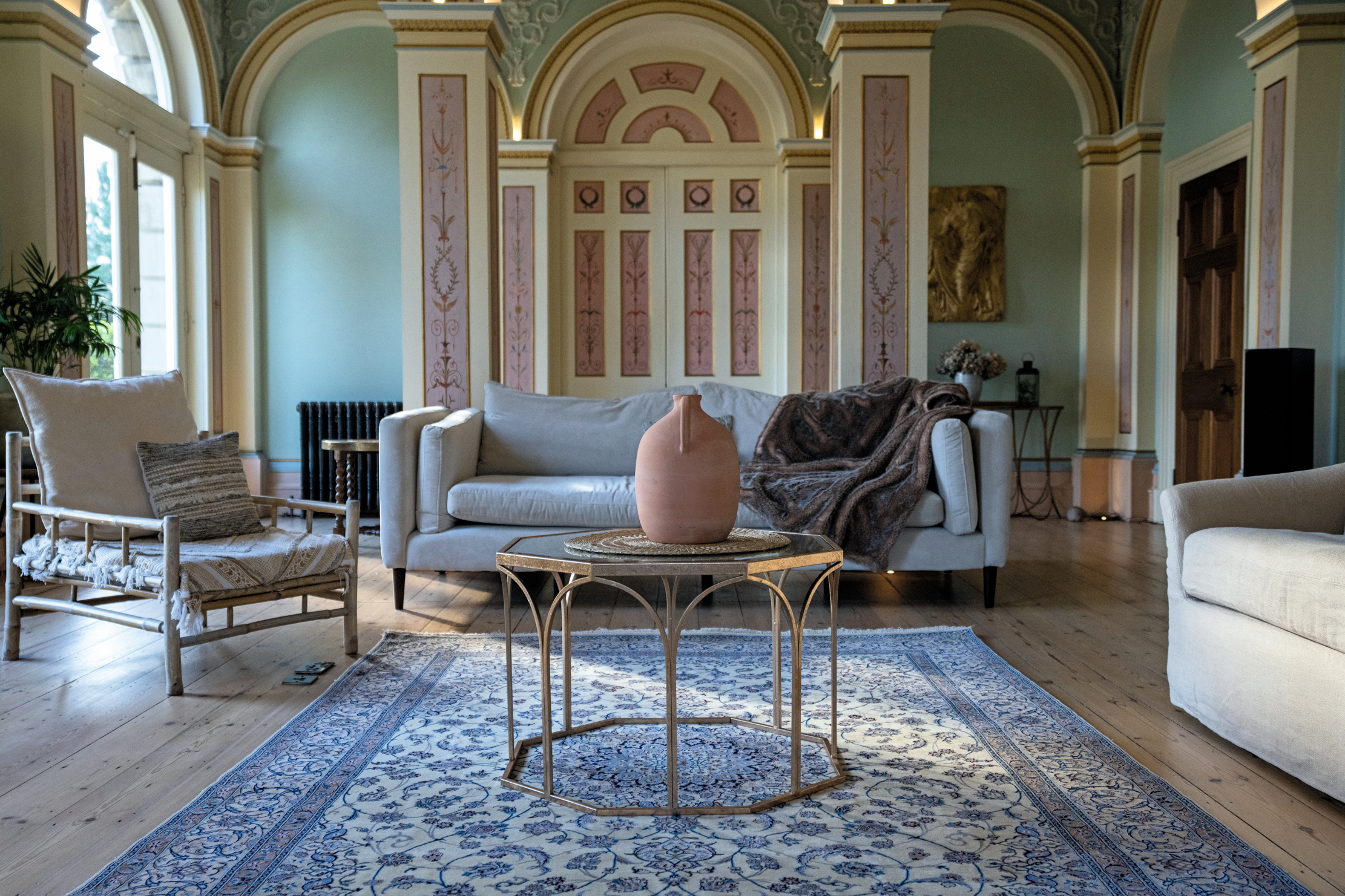

There used to be an old Persian rug hanging on the wall of my husband’s family home. Tattered and worn, its colours faded, it had been passed down through generations of his forebears. Its life had been turbulent: it was one of the few possessions that his Russian great-grandparents had managed to salvage from their country estate, which was seized during the 1917 revolution. They dragged the rug — already a much-loved heirloom — across half of Europe as they fled south in a perpetual state of nomadic exile.
Firstly, they went through Russia, then Georgia, their fortunes dwindling rapidly, and finally into Greece, where the Second World War brought yet more upheaval and a move to England. The rug lived in London in The Boltons, SW10, and Battersea, SW11, and finally Sevenoaks in Kent, a solitary relic of a vanished world, before it was eventually binned in a post-covid clear out, because it was riddled with moths.
It is easy to see how it happened: there was the visceral horror of the teeming moths, added to the fact that the rug looked so very threadbare. Three years on, I still wish we’d been given the opportunity to save it, but I suspect that rather a lot of old rugs have met with a similar fate. In today’s consumerist climate, where it seems infinitely easier to replace an object rather than repair it, it might not seem obvious — or even possible — to revive a badly damaged carpet. However, there is a thriving industry of specialist companies that can clean and restore even the most shredded of textiles and, as if by magic, return them to their former glory.
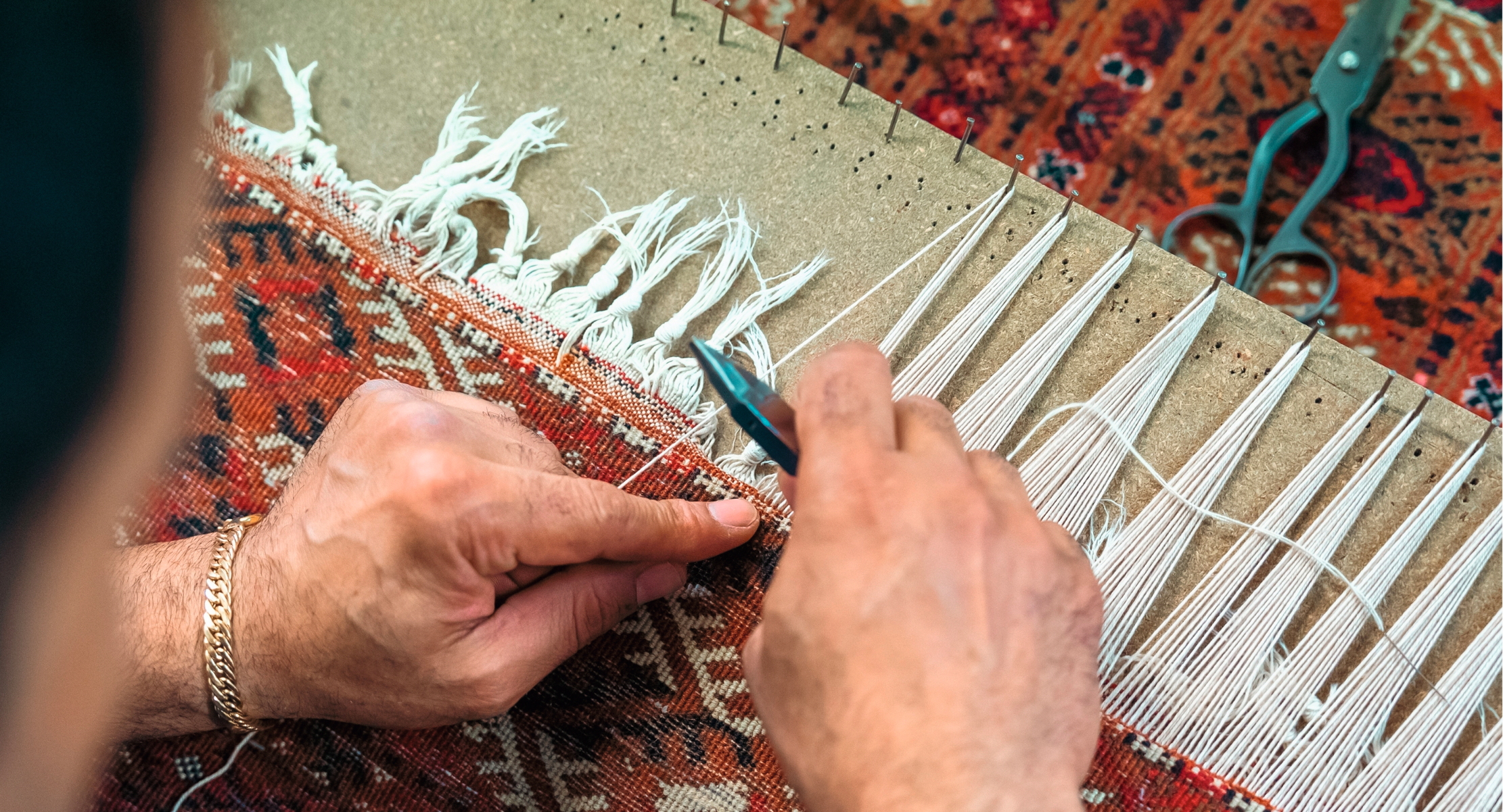
An employee at James Barclay repairs the fringes of a Turkmen rug.
At Park Royal in north London, there is a veritable hive of activity as antique rugs from around the country are brought into the workshop of James Barclay, one of the country’s leading rug restorers, to be cleaned and mended. ‘It’s predominantly handmade rugs that we repair,’ explains Andrew Miller, one of the company directors. ‘You do get some machinemade ones that are worth restoring, but they have to be quite old: Wiltons and Axminsters are the only ones that are typically worthwhile. Everything else is handmade and can come from a wide variety of regions — Persia, Turkey, China, India, Armenia, Georgia, even European rugs from France and Ireland.’
After a client contacts the company, they will typically get a visit from one of its team of knowledgeable drivers, who are able to assess the rug in situ and advise the owner whether or not it’s worth repairing. If it is, it is brought into the workshop to be cleaned, often washing away decades of dirt and grime, which allows the full extent of the damage to be assessed. In terms of repair, almost anything is possible — fringes can be restored, missing patches rewoven, areas recoloured with vegetable dye. Repairs can be tailored to the owner’s preferences (and budget), and can range from doing some minor work to repair a frayed edge to entirely re-creating large areas. If you have a rug that’s seemingly been truly destroyed, it’s still often possible to save a portion of it.
‘If a large area is very badly damaged and you don’t want the expense of building it back up, you can cut the rug down and resize it — that can be a very cost-effective solution,’ recommends Andrew. In some instances, depending on the value of the item, it can be cheaper to replace rather than repair, although, in practice, this tends to present its own set of problems. ‘You could spend six months or a year looking for something you like as much as the rug you’re trying to replace,’ points out Mr Miller. ‘Antique rugs are unique — different sizes, different colours, different designs and ages — and it’s not until people start looking for a new one that they realise how hard it is to find something similar. That’s why most people end up repairing the rugs they already have.’

Re-weaving holes in a damaged rug, known as re-piling, is carried out a the Oriental Rug Repair Company.
There is also the opposite situation, where valuable antiques are unknowingly consigned to the tip. ‘It’s extraordinary how many people get rid of rugs that are exceptionally valuable, merely because they don’t look brand new,’ laments Bryan Difford of The Oriental Rug Repair Company. ‘We had one customer who wanted to throw away an enormous and very beautiful Persian rug; we ended up convincing him to let us restore it and we sold it for a very decent sum. With rugs, you should think of them like cars: it’s always good to try and trade them in for a part exchange.’
Exquisite houses, the beauty of Nature, and how to get the most from your life, straight to your inbox.
He cites the example of a recent client, who contacted them after a chance meeting with a neighbour at a recycling centre. Seeing them disposing of a moth-eaten carpet, he intervened and took it home with him. ‘It turned out to be a very large Persian Kashan: it needed about £1,500 of restoration work, but it was then valued at almost £10,000,’ elaborates Bryan. ‘No matter what the condition is, old rugs always have intrinsic value.’
Compared with any other antique you might have in your home, rugs are subjected to infinitely more abuse, simply because they spend their lives on the floor. Speak to any professional restorer and you’ll hear tales of priceless carpets suffering all manner of indignities, from dogs peeing on them and cats using them as a favourite scratching mat to the occasional errant toddler armed with a set of marker pens and a passion for colouring things in.
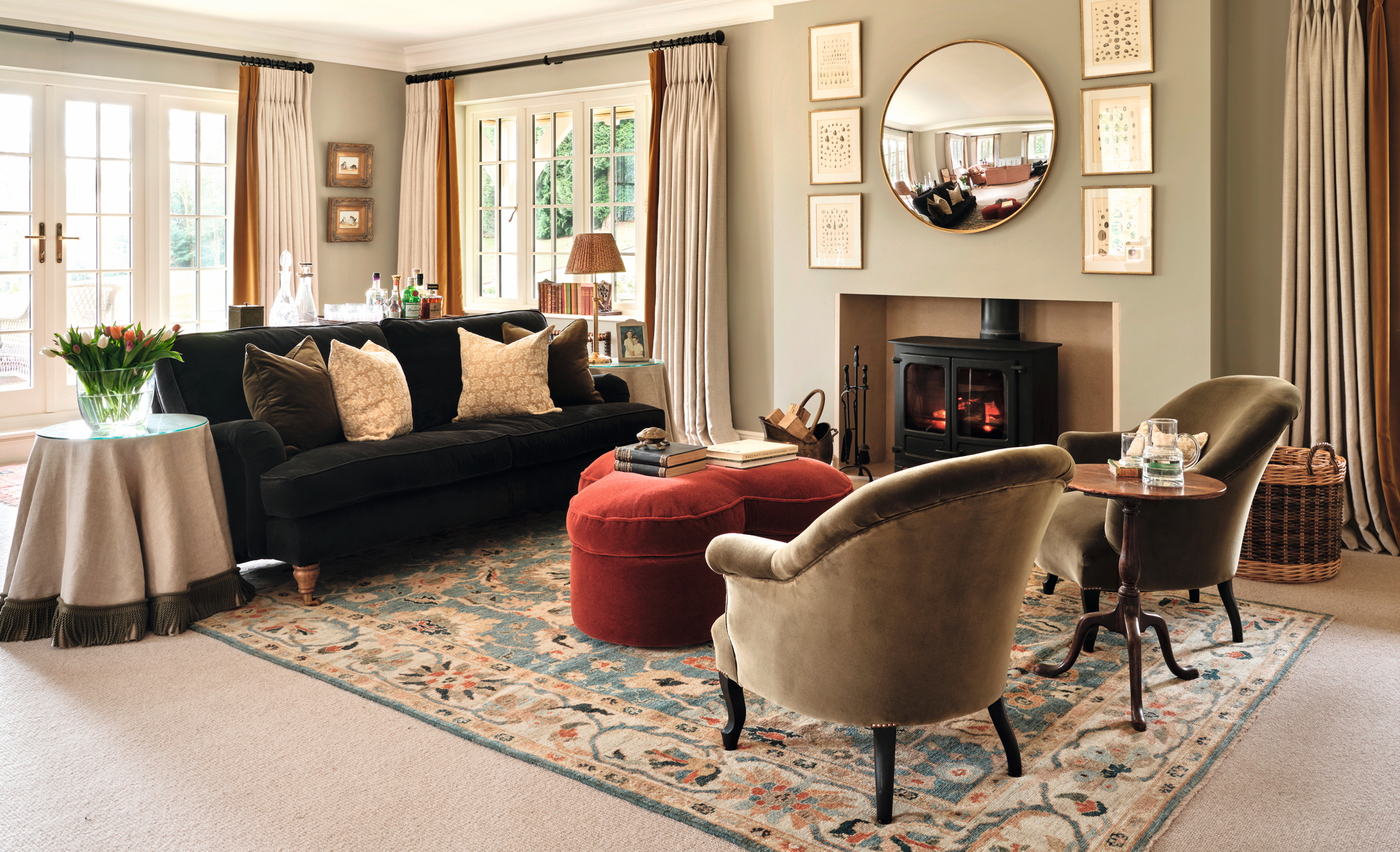
A Ziegler carpet of about 1890 is rescued from the moths and now shines in the centre of this living room courtesy of Farnham Antique Carpets.
However, it’s reassuring to know that almost anything can be fixed. ‘One of our clients had spent a lot of money on a very nice carpet, then had a party, whereupon a log rolled out of the fireplace and landed on the carpet. By the time someone noticed, the log had burnt a huge hole right through it,’ recalls Rod Davies of Farnham Antique Carpets. ‘They were devastated, but got it back to us and we fixed it — you couldn’t even tell where the damage had been. There are a couple of other instances where we’ve repaired rugs where the owners haven’t actually known about it: housekeepers have given us things and we’ve taken care of it without the owners ever finding out.’
Sometimes, the most satisfying projects aren’t the most valuable: it’s those where a much-loved family heirloom is brought back to life. ‘We repaired a Heriz carpet for someone recently and they spent several thousand on the restoration of it,’ notes Mr Davies. ‘That was pretty much the value of the rug, but the client remembered playing on it with his toy cars as a boy, 70 years ago, so he wanted it back. That was a nice job to do.’
If you ever find yourself on the brink of getting rid of an old rug, take a moment to consider if it might be worth repairing instead. After all, the possessions we live with become part of the very fabric of our homes — surely it’s worth doing everything we can to allow them to live on and be handed down to the next generation.
Catriona Gray is a journalist and author, and a regular contributor to Country Life. She has written for House & Garden, the World of Interiors, and the Financial Times, and was commissioning editor at Town & Country and Harper’s Bazaar.
-
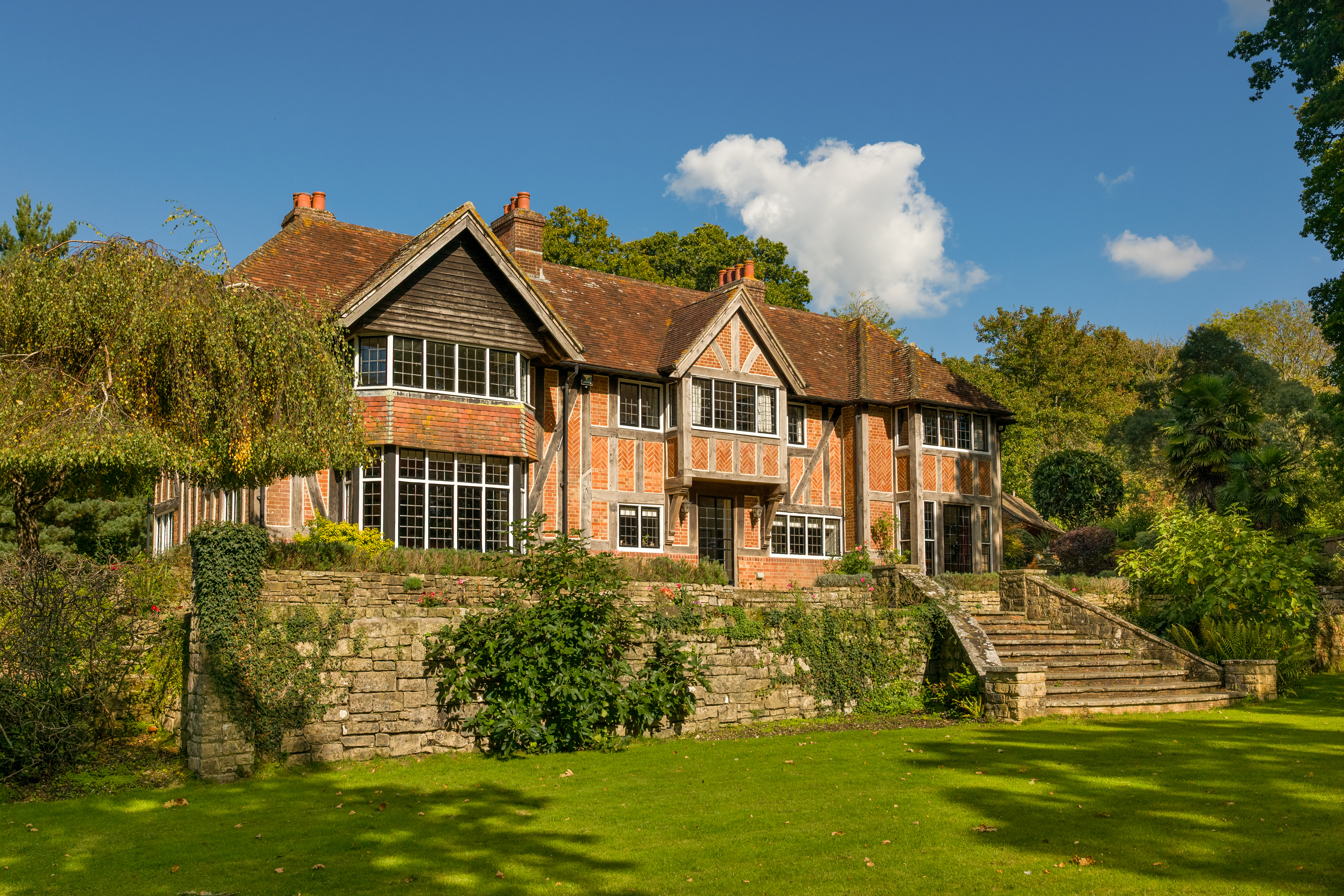 An Arts-and-Crafts home that sits in prime position in the most exclusive (and priciest) road in Hampshire
An Arts-and-Crafts home that sits in prime position in the most exclusive (and priciest) road in HampshireWith its own private jetty on the Beaulieu River, The Rookery is a rare and beautiful home. Penny Churchill takes a look.
-
 ‘I 100% always knew that I was going to do something creative’: Petra Palumbo on her design house, love of Scotland and consuming passions
‘I 100% always knew that I was going to do something creative’: Petra Palumbo on her design house, love of Scotland and consuming passionsThe London ‘It Girl’ turned Scotland-based designer makes tiles with men’s torsos and Henry hoovers on them, has a pug called Raisin and is married to the 16th Lord Lovat Simon Fraser. She chats to Lotte Brundle.
-
 How one family went about creating a welcoming kitchen in one of England's neo-Palladian houses
How one family went about creating a welcoming kitchen in one of England's neo-Palladian houses‘We were nervous about creating a kitchen in such a grand room.'
-
 How do you make a 300-year-old Baronial castle fit for modern-day living?
How do you make a 300-year-old Baronial castle fit for modern-day living?A mix of sympathetic colours and elegant furniture has brought new life to this impressive space at Aldourie Castle.
-
 Oh, my gourd, it’s Hallowe’en: How best to decorate your home with pumpkins, squashes and more
Oh, my gourd, it’s Hallowe’en: How best to decorate your home with pumpkins, squashes and moreAs the feast of All Hallow’s Eve approaches, Debora Robertson advises how best to decorate your home with autumn's edible bounty.
-
 At the Snowdon Summer School, the future of design lies in the traditions of the past
At the Snowdon Summer School, the future of design lies in the traditions of the past'It was the first time that I had ever been around people who shared my interest in making furniture at such a high level — and who shared my passion for fine furniture.'
-
 It's a perfect storm for the revival of eclecticism, and we're in the middle of it
It's a perfect storm for the revival of eclecticism, and we're in the middle of itIn design, periods of purism are often followed by a dramatic new mood. Now, the scene is set for an exciting revival of eclecticism.
-
 For Rita Konig, interior design isn’t only about coherence and comfort — it should be a celebration of stuff
For Rita Konig, interior design isn’t only about coherence and comfort — it should be a celebration of stuffGiles Kime charts the transatlantic career of the eclectic journalist-turned-designer.
-
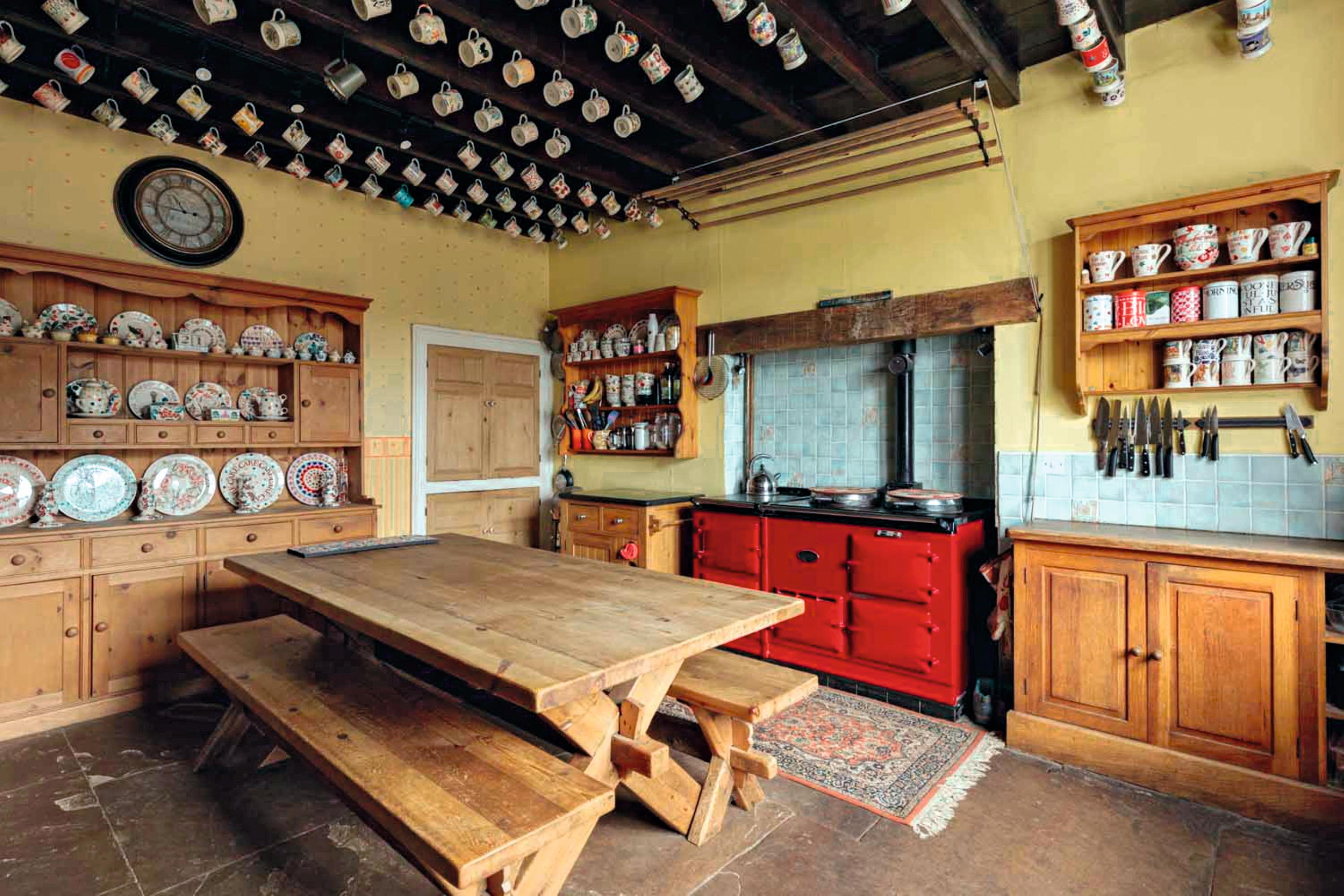 Farmhouse kitchens done right at these five beautiful country houses across Britain
Farmhouse kitchens done right at these five beautiful country houses across BritainA country house with a farmhouse kitchen is the archetype of the bucolic dream in Britain. Arabella Youens picks out five on the market right now that have wonderful examples.
-
 Diversity in style and diversity in location: London's best art is all around us
Diversity in style and diversity in location: London's best art is all around usLondon's hotels, pubs and restaurants show the great depth of the capital's artistic tastes.
